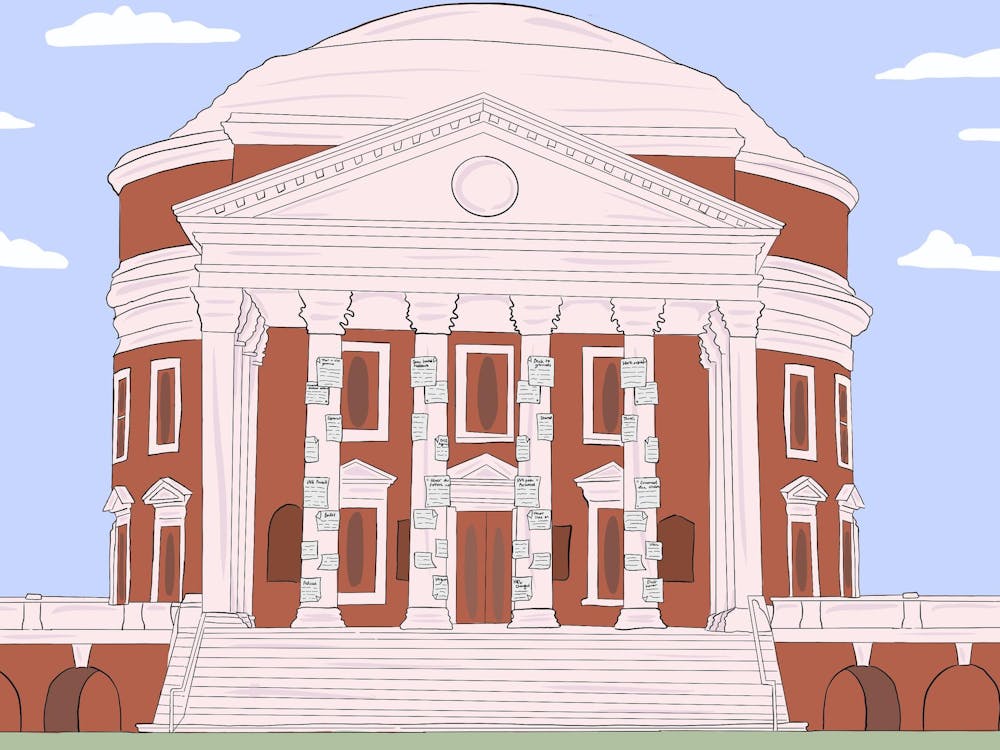This semester has brought to light, for me, a topic that was never really talked about during my first year — suicide. Events of this year, both here at the University and around the country, have demonstrated that suicide is an important topic, one that needs to be understood and openly addressed.
There are about 30,000 suicides annually in the United States, and it is the third-most common cause of death for people between the ages of 10 and 24. What is worse, the suicide rate is almost always on the rise, and is the second-leading cause of death among college students. Dr. James C. Turner, executive director of Student Health at the University, found that suicide caused more deaths than alcohol among college populations, edged out only by vehicle accidents.
What do all of these statistics mean, and how are college students, in particular, affected? In some ways, everything about college life contributes to increased suicide risk. Students are away from home or removed from their support systems; they are working under stressful conditions, eating and sleeping irregularly, and they are engaging in activities that, anywhere else, they might avoid. Alcohol abuse and destructive relationships are just some dangerous factors that I have noticed in my time at college. But given these risk factors, what actually pushes people toward suicide?
Most of us know of the tragic suicide of Tyler Clementi, the gay Rutgers student who was recorded and ridiculed through his roommate’s webcam, which captured Clementi’s interactions with another male student. Clementi jumped from George Washington Bridge soon after.
Then there is Trey Malone, the Amherst student who was a victim of sexual assault and who wrote a long and powerful suicide note that touched upon his college’s shortcomings in providing support. These young men were promising individuals who felt marginalized and without a solution to the problems they faced. They also faced adversity from the very places to which they were hoping to turn for help. Fellow students, in some cases, are part of the problem. Whether they are hitting record on a webcam or saying something derogatory through social media or in person, fellow students can create and strengthen the sense of isolation felt by many who ultimately turn to suicide. Other students may not take an active role in hurting a peer, but apathy can do just as much harm to someone looking for a friend as outright signs of dislike.
The most vulnerable are gay students. Compared to their heterosexual counterparts, young lesbians are six times more likely to attempt suicide, and young gay men are 30 times more likely. But any student who is noticeably different faces an uphill battle in being accepted socially by his or her peers and is therefore more vulnerable to the kind of pressures and isolation that lead young people to suicide.
Where can students in such circumstances turn, and what can the rest of us do to help prevent tragedies from happening? At the University, we have our resident advisors — young men and women who I have seen step into and resolve dangerous situations where suicide was possible. We have counseling services such as CAPS and various services for sexual assault issues. Then there are other students, in many cases the first and last line of defense for community members in trouble.
Unlike family and many childhood friends, who may have formed a pre-college support system, fellow University students are always around and can form the kind of support troubled students need. Peers recognize a potentially tragic situation when they see a post on Facebook, read a tweet or overhear a conversation. They can step in and avert disaster, sometimes through just an hour’s time, sometimes with a greater personal commitment. I am not a hero or a saint in this category, but I know people who are, and I have been amazed by their consistent and selfless effort on behalf of those in trouble. I have seen the forging of new friendships, coaching during crushing academic struggles and healing after deeply harmful relationships. Beneath the surface of the people we walk past every day are some truly monumental challenges and struggles, yet there are also those who take the time to get their fellow students’ lives back on track and make a lasting difference.
The struggle to prevent suicide is ongoing and difficult to pin down. It is, however, becoming less taboo of a subject, something people are more willing to talk and learn about. It is up to us as students to put this knowledge into action. We need to ensure that those on the fringe do not slip through the cracks, and that the voices on the edge of our hearing do not go unheeded.
Sam Novack’s column appears Wednesdays in The Cavalier Daily. He can be reached at s.novack@cavalierdaily.com.






